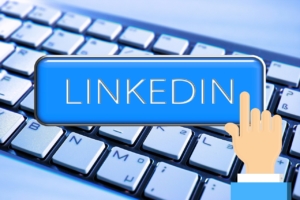How are Guns Affecting Americans? The Stats Give Us Some Insight
Whether you are a gun enthusiast or hate guns, guns are here to stay. And while the Second Amendment pretty much guarantees guns will remain in America in perpetuity, it is unlikely the founding fathers would agree with the mayhem that is going on today.
 All of this violence is happening at a time when many states are loosening gun restrictions with something called constitutional carry also known as a permit-less carry of a firearm. For those of us who are responsible, that’s great. This of course is a double edge sword for those who have significant mental health issues and the potential victims at the end of their barrel.
All of this violence is happening at a time when many states are loosening gun restrictions with something called constitutional carry also known as a permit-less carry of a firearm. For those of us who are responsible, that’s great. This of course is a double edge sword for those who have significant mental health issues and the potential victims at the end of their barrel.
As reported in the Washington Post and elsewhere, “of course, semiautomatic firearms technology didn’t exist in any meaningful sense in the era of the founding fathers. They had something much different in mind when they drafted the Second Amendment. The typical firearms of the day were muskets and flintlock pistols. They could hold a single round at a time, and a skilled shooter could hope to get off three or possibly four rounds in a minute of firing. By all accounts, they were not particularly accurate either.”
Let’s take a look at some basic gun statistics in America:
- There are 393 million guns out there
- In 2020, 40 million guns were purchased – the highest number ever
- 45,222 people died in the US from gun injuries in 2020
- Between 2000 and 2020, there was a 40% increase in active shooter incidents
- From 1998-2019 the USA had 109 Mass Shootings. Second in place for “wealthy nations” was France with 8 Mass Shootings.
- Guns are now the leading cause of death for American children. 4,368 children and adolescents up to the age of 19 died from firearms in 2020, there were 4,036 deaths linked to motor vehicles.
- From the New York Times “Where there are more guns, there are more gun deaths. Studies have found this to be true at the state and national level. It is true for homicides, suicides, mass shootings and even police shootings.
- And: Stricter gun laws appear to help. They are associated with fewer gun deaths, in both a domestic and global context, while looser gun laws are linked with more gun deaths.
- And: Over the past decade, the Anti-Defamation League has counted about 450 U.S. murders committed by political extremists.
- And: As this data shows, the American political right has a violence problem that has no equivalent on the left. And the 10 victims in Buffalo this past weekend are now part of this toll. “Right-wing extremist violence is our biggest threat,” Jonathan Greenblatt, the head of the ADL, has written. “The numbers don’t lie.””
Many believe that people are becoming numb to the instances of gun violence, and it’s interesting to consider if there is a mass shooting in small town, would it affect a person in a high-rise in a big city. A group of researchers at Evolv and Equation Research surveyed over 2000 Americans to find out the answers.
Gun Violence is Everywhere
One of the most shocking things the researchers found…or perhaps not so shocking…is the fact that guns and shootings are truly everywhere.
According to the researchers and Security Magazine, 29% of people who responded said that they were in a location where a person unexpectedly shot off a gun. About 38% of those who replied also reported that they knew someone else who had experienced gunfire unexpectedly.
In both of these scenarios, the gunfire occurred either at a large gathering of people or in a nightclub/bar.
Why is this type of violence on the rise? There could be a few explanations. First, we have the COVID-19 pandemic and the lockdowns, which disrupted all of our lives. This includes the social services that people have access to that can lower violence and crime. The next could be the high-profile police killings in 2020, which spurred protests and put a damper on police-community relationship. Finally, of course, we have the rise in gun purchases.
However, there is also a growing feeling of distrust and discord, and Americans have greatly lost faith in the American institution. The country is deeply divided politically, and it is believed that all of this has led to an increased murder rate, more mental health issues, and even problems with more confrontations between strangers.
Americans are Nervous
The American Psychological Association has reported that Americans, overall, have a lot of anxiety and stress since March of 2020. Research shows that people are anxious about things like terrorism, shootings, and other forms of gun violence. In fact, about 81% of the people who replied to the study are anxious specifically about guns and 62% feel anxiety about going to a public place, especially a movie theater, nightclub/bar, or large gatherings.
For those who have plans to go to a live event in the next six months, around 46.2% of people reported that they were feelings anxiety about COVID-19, but 31% of them also say they have anxiety about shootings and 21% have concerns about terrorism.
The Threat of Gun Violence is Also Impacting Business
In addition to general anxiety about gun violence, this research has shown that businesses are also impacted by gun violence.
Almost 40% of people who were studied report that they have not gone somewhere because they had a fear or anxiety about guns. A lot of people also report that they have a plan in place or look for a way out when they go to a place where a mass shooting could occur. For instance, almost 63% of people report that they have a mental escape plan and check exits when they go to a movie theater. Almost 50% report that they do the same thing in a grocery store. More than 60% report that they have anxiety about going to a public place.
People are Willing to Change Their Habits
Just as it is important for people to understand how Americans feel about the rates of gun violence rising, it is also so important to understand what steps they may take in order to feel safe. Around 78% of people said that they would be okay to take extra steps at places where there is potential for gun violence. For instance, 57% of people said they would comply with weapons detection screening. Around 46% of people say they would be willing to have their bags checked, and 44% would be fine to check their guns at the door. It’s also important to note that 22% of respondents say they would not be willing to do anything.
Businesses across the board have to keep all of this in mind and take some steps to create a plan to keep their patrons safe. This is a unique time in history, and as people around the world start to come back from the pandemic and enjoy life again, there is a lot of anxiety around what will happen as we go “back to normal.” The best thing to do is to make some new plans and protocols in order to keep up with any threats.
There are many solutions on the table geared toward preventing gun violence. Is it more rules and regulations? Stricter access to firearms? Will background checks solve the problem or only just a small part of it? Is the solution for every single person to have a gun? Smaller magazine capacities? The list goes on and on. At this point, the worst thing we can do, is nothing.
Peter Warmka, my cohost and retired CIA Spy and I discuss all of this in our podcast The Security Guy and CIA Spy.
What do you think? And whatever you put in the comment section, please be respectful.
Written by Robert Siciliano, CEO of Credit Parent, Head of Training & Security Awareness Expert at Protect Now, #1 Best Selling Amazon author, Media Personality & Architect of CSI Protection Certification.

 Phishing scams on LinkedIn generally revolve on stealing credentials, financial scams, espionage, and impersonations design to facilitate all of the above.
Phishing scams on LinkedIn generally revolve on stealing credentials, financial scams, espionage, and impersonations design to facilitate all of the above.


 If you are planning an upcoming vacation or a business trip, you might be thinking about renting a car. “Smart Cars” are all the rage, and they connect to the internet. You get Bluetooth, navigation, hands-free calling, live-streaming, and much more. In fact, if you have a fairly new car, yourself, you probably already have some access to these features. You probably connect your devices to your car, too, so that you can stream music, text, make phone calls, etc. This is no issue because it’s your own car, and only you and your family are using it.
If you are planning an upcoming vacation or a business trip, you might be thinking about renting a car. “Smart Cars” are all the rage, and they connect to the internet. You get Bluetooth, navigation, hands-free calling, live-streaming, and much more. In fact, if you have a fairly new car, yourself, you probably already have some access to these features. You probably connect your devices to your car, too, so that you can stream music, text, make phone calls, etc. This is no issue because it’s your own car, and only you and your family are using it. Unsurprisingly, the White House and CISA published a directive “There is now evolving intelligence that Russia may be exploring options for potential cyberattacks.” To those in the security community, this is nothing new, we know this is been going on forever.
Unsurprisingly, the White House and CISA published a directive “There is now evolving intelligence that Russia may be exploring options for potential cyberattacks.” To those in the security community, this is nothing new, we know this is been going on forever. It’s possible that your router or any router you connect to has been hacked and you won’t know it. A known tactic called
It’s possible that your router or any router you connect to has been hacked and you won’t know it. A known tactic called  From my experience, they’ve done a pretty good job of that thus far. To this day I am unaware of a password manager that has been breached in such a way where all of the user data was unencrypted and exposed. In general, these companies engage in full on application security and have bank level or military grade encryption. What is so bizzare to me is last I read, less than 10% of computer users use a password manager. I think a password manager is the best use of my time and money in regards to computer security.
From my experience, they’ve done a pretty good job of that thus far. To this day I am unaware of a password manager that has been breached in such a way where all of the user data was unencrypted and exposed. In general, these companies engage in full on application security and have bank level or military grade encryption. What is so bizzare to me is last I read, less than 10% of computer users use a password manager. I think a password manager is the best use of my time and money in regards to computer security. Now while Google upsets many people for many reasons, they do a pretty good job at keeping your email account secure. And they provide a number of tools to accomplish that task. The problem is not usually Google, the problem is usually in the “seat” and that’s you buddy. All of you fools using the same password across multiple accounts are potential victims of “credential stuffing” and those of you using the same pass code across multiple accounts are just, well dumb. No offense. But really, it’s just stupid.
Now while Google upsets many people for many reasons, they do a pretty good job at keeping your email account secure. And they provide a number of tools to accomplish that task. The problem is not usually Google, the problem is usually in the “seat” and that’s you buddy. All of you fools using the same password across multiple accounts are potential victims of “credential stuffing” and those of you using the same pass code across multiple accounts are just, well dumb. No offense. But really, it’s just stupid.























